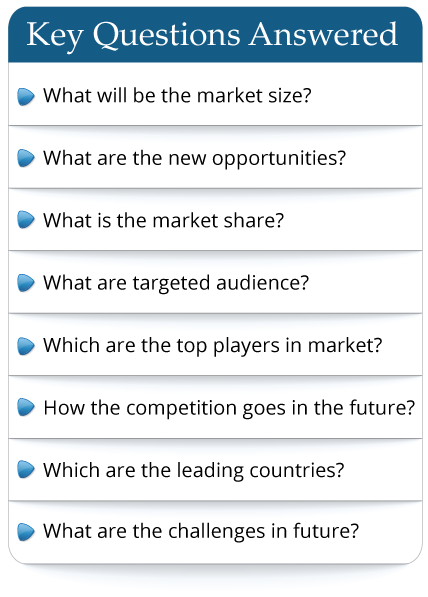BRAIN COMPUTER INTERFACE MARKET OVERVIEW
The global Brain Computer Interface Market size was valued approximately USD 3.19 Billion in 2025 and will touch USD 12.53 Billion by 2034, growing at a compound annual growth rate (CAGR) of 16.42% from 2025 to 2034.
Brain-Computer Interfaces (BCIs) are cutting-edge technologies that connect the human brain directly with external devices, enabling people to control computers, prosthetics, and other systems using just their thoughts. This innovative tech is becoming especially important for people with physical disabilities, allowing them to interact with their surroundings in new ways. BCIs are also used in gaming, healthcare, and research, providing valuable insights into brain activity. With the rapid advancements in neuroscience and artificial intelligence, BCIs are evolving quickly, offering exciting possibilities for improving lives and unlocking new ways to interact with technology.
IMPACT OF KEY GLOBAL EVENTS
"Advancements in Artificial Intelligence Accelerate Brain-Computer Interface Development"
The rapid progress in artificial intelligence (AI) has significantly fueled the growth of the Brain-Computer Interface (BCI) market. AI technologies are enhancing the capabilities of BCIs by improving signal processing, data analysis, and user interface development. With AI algorithms, BCIs can now interpret brain signals more accurately and in real-time, enabling more effective applications in healthcare, communication, and rehabilitation. As AI continues to evolve, the synergy between AI and BCIs is expected to unlock new possibilities, from controlling prosthetics to enabling direct brain-to-device communication. This convergence is speeding up innovation in the BCI market and expanding its potential applications across various industries.
LATEST TREND
"Advancements in Non-Invasive Brain-Computer Interface Technologies"
The Brain-Computer Interface (BCI) market is witnessing a growing trend towards non-invasive technologies. There is a rising demand for BCIs that do not require surgical implants but can still offer precise and reliable brain signal readings. This trend is driven by the need for safer, more accessible solutions for applications like communication for disabled individuals, mental health monitoring, and gaming. Advances in EEG (electroencephalography) and other sensor technologies are making it possible to gather brain data without the need for invasive procedures, making BCIs more user-friendly and widely adoptable. These improvements are also reducing costs and opening up new opportunities for BCI technology to be integrated into everyday applications.
BRAIN COMPUTER INTERFACE MARKET SEGMENTATION
By Type
Based on Type, the global Brain-Computer Interface (BCI) market can be categorized into: Invasive BCI and Non-Invasive BCI.
- Invasive BCI: Invasive BCIs involve surgically implanting electrodes directly into the brain tissue to measure neural activity. These systems provide more accurate and precise readings compared to non-invasive methods, making them ideal for applications that require high-fidelity brain data, such as advanced medical treatments for conditions like paralysis, neurological disorders, or brain injuries. Due to the direct connection with the brain, invasive BCIs can offer more detailed and reliable signals, but they come with higher risks, including the need for surgery, infections, and longer recovery times.
- Non-Invasive BCI: Non-invasive BCIs use external sensors, such as electroencephalography (EEG) caps or headsets, to detect brain signals without the need for surgical intervention. These systems are safer, more comfortable, and easier to use than invasive BCIs, but they provide lower resolution in the collected data. Non-invasive BCIs are widely used in applications like brain-controlled prosthetics, mental health monitoring, gaming, and research. The growing demand for these systems is fueled by their accessibility, user-friendliness, and less risky nature, despite their comparatively limited precision.
By Application
Based on application, the global Brain-Computer Interface (BCI) market can be categorized into: Medical and Military.
- Medical: In the medical sector, BCIs are used to treat patients with neurological disorders, paralysis, and brain injuries. These systems can assist patients by restoring lost functions through brain-controlled prosthetics or enabling communication for individuals who are unable to speak or move. BCIs are also being explored for mental health applications, such as diagnosing and treating conditions like depression, anxiety, and epilepsy. With advancements in neurotechnology, BCIs have the potential to revolutionize the way neurological conditions are treated, offering patients more independence and improved quality of life.
- Military: In the military, BCIs are utilized for enhancing soldiers' performance, providing direct brain-to-machine communication for controlling equipment such as drones, exoskeletons, or weapons systems. BCIs can also be used for monitoring soldiers' mental states, helping to prevent fatigue or stress-related issues, and improving decision-making in high-pressure environments. Additionally, BCIs hold promise for advanced prosthetics and rehabilitation for wounded soldiers, giving them the ability to control artificial limbs or other assistive devices with their thoughts. The military sector is one of the key drivers of BCI development, with the potential to enhance soldier effectiveness and support battlefield operations.
MARKET DYNAMICS
Market dynamics include driving and restraining factors, opportunities and challenges stating the market conditions.
Driving Factors
"Advancements in Healthcare and Technology Drive Brain-Computer Interface Market Growth"
The rapid advancements in healthcare technology and the increasing demand for innovative solutions in neurology are fueling the growth of the Brain-Computer Interface (BCI) market. With the rise in neurological disorders, such as paralysis, strokes, and brain injuries, there is a strong push for BCIs that can help restore lost functionalities or enable communication for patients with severe disabilities. Furthermore, advancements in non-invasive BCI technologies are making it easier to integrate BCIs into daily healthcare practices. The growing focus on improving the quality of life for patients and the continuous evolution of technology are propelling BCIs to the forefront of the medical field, presenting significant opportunities for market expansion.
Restraining Factor
"High Cost and Technical Complexity Hinder Widespread Adoption of Brain-Computer Interfaces"
A major limitation for the Brain-Computer Interface (BCI) market is the high cost of developing and implementing these technologies, which can be a barrier for many healthcare institutions and individuals. The complex nature of BCI systems requires substantial investment in research and development, as well as in specialized hardware and software. Additionally, technical challenges in ensuring the reliability, accuracy, and safety of BCIs further increase the costs and complexity. These factors make it difficult for many potential users, especially in emerging markets, to adopt BCIs despite the significant benefits they offer.
Opportunity
"Rising Demand for Enhanced Healthcare Solutions Fuels Brain-Computer Interface Growth"
A significant opportunity for the Brain-Computer Interface (BCI) market lies in the growing global demand for advanced healthcare technologies. With increasing attention on improving patient outcomes for neurological disorders, BCIs are seen as a potential solution for conditions like paralysis, stroke, and other motor impairments. The rise of personalized medicine and non-invasive treatment options also presents an opportunity for BCIs to expand into everyday medical care. By addressing the pressing need for better, more efficient therapeutic solutions and tapping into the broader healthcare market, BCI companies can capture new growth avenues and expand their reach in the medical field.
Challenge
"High Cost and Technical Complexity Hinder Widespread Adoption of Brain-Computer Interfaces"
A major challenge facing the Brain-Computer Interface (BCI) market is the high cost associated with developing and implementing these advanced technologies. The complex hardware, software, and research required to create functional BCIs make them expensive, which can be a barrier for healthcare providers, particularly in developing regions. Additionally, the need for specialized training to operate and maintain these systems adds to the overall cost. As a result, the high financial investment and the technical expertise required limit the widespread adoption of BCIs, especially in non-specialized settings or among smaller healthcare providers.
BRAIN COMPUTER INTERFACE MARKET REGIONAL INSIGHTS
North America
The Brain-Computer Interface (BCI) market in North America is growing rapidly, driven by advancements in technology and healthcare. The U.S. leads in BCI applications, particularly in medical fields like assistive devices for neurological conditions. Military and defense sectors are also contributing to the rise in demand. With strong collaborations between tech companies and healthcare providers, North America is a key region in BCI development.
Europe
Europe’s BCI market is expanding, with significant investments in healthcare innovation. Countries like Germany, the UK, and France are integrating BCIs into medical treatments for neurological disorders. The region is also exploring BCI applications in gaming and virtual reality, making Europe a leader in neurotechnology research and development.
Asia-Pacific
The Asia-Pacific market for BCIs is growing, driven by increasing healthcare needs and technological adoption. Countries like Japan, China, and South Korea are developing BCIs for medical applications, especially for patients with cognitive impairments. APAC is also focusing on BCI use in education, gaming, and robotics, positioning the region as a rising player in the global market.
KEY INDUSTRY PLAYERS
"Market Movers in Brain-Computer Interfaces: Innovation and Expansion"
Leading companies in the Brain-Computer Interface (BCI) market are focusing heavily on advancing technology to improve accuracy and functionality. They invest in R&D to enhance the efficiency of BCIs, especially for medical and gaming applications. To expand their market presence, these firms are entering new regions, particularly in Asia-Pacific and Europe, where BCI adoption is growing. Strategic partnerships with healthcare providers and tech firms are helping expand their reach and develop innovative, user-friendly solutions.
List Of Top Brain Computer Interface Market Companies
- Medtronic
- tec medical engineering GmbH
- Natus Medical Incorporated
- Compumedics Neuroscan
- Brain Products GmbH
REPORT COVERAGE
The research presents a thorough SWOT analysis, shedding light on potential future market trends. It looks into the elements that are driving market growth, covering various market segments and possible applications that could influence its future direction. The analysis considers both current market dynamics and past significant changes, offering a complete grasp of the market's structure and highlighting areas with growth potential.
The Brain-Computer Interface (BCI) market is poised for growth, driven by advancements in neurotechnology, increased demand in healthcare, and applications in gaming and robotics. Despite challenges like high costs and regulatory hurdles, BCIs are gaining traction in medical treatments, especially for neurological disorders. Leading companies are investing in research and forming partnerships to enhance product offerings and expand into new regions. As technology continues to evolve, the BCI market is set for continued innovation and opportunities across various industries.
Frequently Asked Questions
- By product type
- By End User/Applications
- By Technology
- By Region

 Pre-order Enquiry
Pre-order Enquiry Download Free Sample
Download Free Sample










